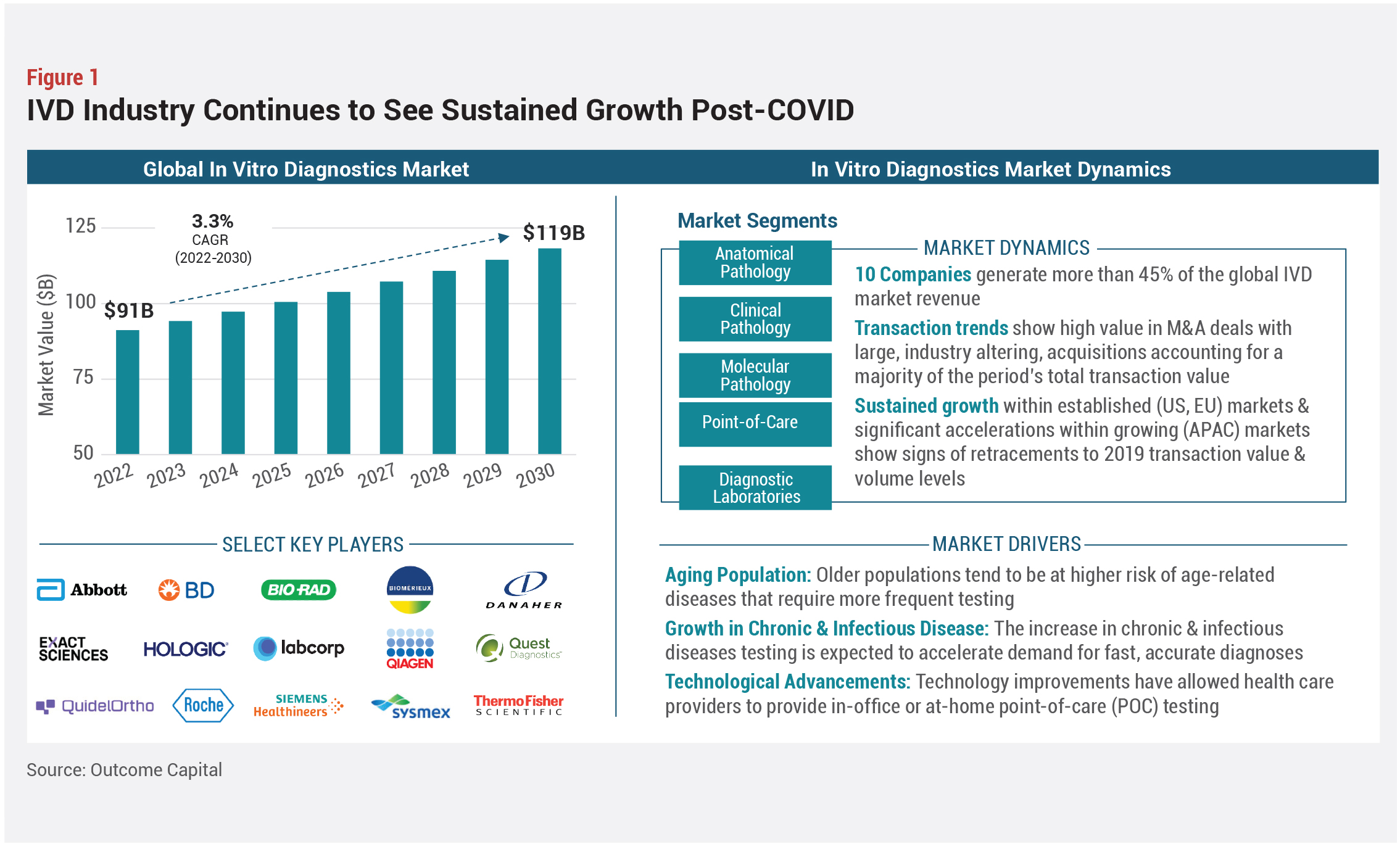ARTICLE SUMMARY:
Financing availability and valuations are reverting to pre-pandemic levels, following an unprecedented period of access to capital. Excerpted from our recent feature, “Financing Diagnostics in the Post-COVID World: What the Data Shows to Date,” by Craig Steger, Oded Ben-Joseph, PhD, and Carey Gallant, Outcome Capital, and Wendy Diller.
During the COVID-19 pandemic, the US government imposed sweeping pandemic measures on the nation allowing millions of Americans to receive free tests, vaccines, and treatments aimed to prevent spread of a potentially life-threatening, highly contagious disease. These COVID-19 emergency declarations will end on May 11, marking a close to the US response to the global pandemic.
With the end of the pandemic, the in vitro diagnostics (IVD) industry is confronting a reckoning—one that was predictable but is still painful. After peaking in 2021, IVD financings, particularly for early-stage companies, are tight, valuations are coming down, and deals, regardless of subspecialty, are smaller in size and volume, according to Outcome Capital’s latest survey highlighting trends in the IVD industry from the second half of 2021 through year-end 2022. The downward trends are in line with experiences throughout much of the life sciences industry, but strike particularly hard at the IVD industry, which flourished to a remarkable degree from the enormous influx of funding and demand for COVID testing.
Additional funding and resources from the government helped get start-ups in the field, which otherwise might never have made it off the ground. Companies ranging from large multinationals to start-ups benefited from investor appreciation for the value, often overlooked, to the field of medicine. The market’s unprecedented appetite for test innovation and regulatory flexibility fueled new highs in 2021, outpacing the S&P by greater than 5%. The IVD industry, including manufacturers and laboratory  services, generated an estimated $91 billion in 2022, up from $60.7 billion pre-pandemic (2019). We predict that pace will slow to a sustained overall growth rate in the low single digits through 2030, with an estimated CAGR of 3.3%, reaching $119 billion by 2030 (see Figure 1). Growth will be stable in the US and Europe and accelerate in the Asia-Pacific region.
services, generated an estimated $91 billion in 2022, up from $60.7 billion pre-pandemic (2019). We predict that pace will slow to a sustained overall growth rate in the low single digits through 2030, with an estimated CAGR of 3.3%, reaching $119 billion by 2030 (see Figure 1). Growth will be stable in the US and Europe and accelerate in the Asia-Pacific region.
That said, much of that expansion will come from large strategic players, of which the top 10 companies in the industry generate 45% of the global IVD market revenues.
Continue reading this article here.


